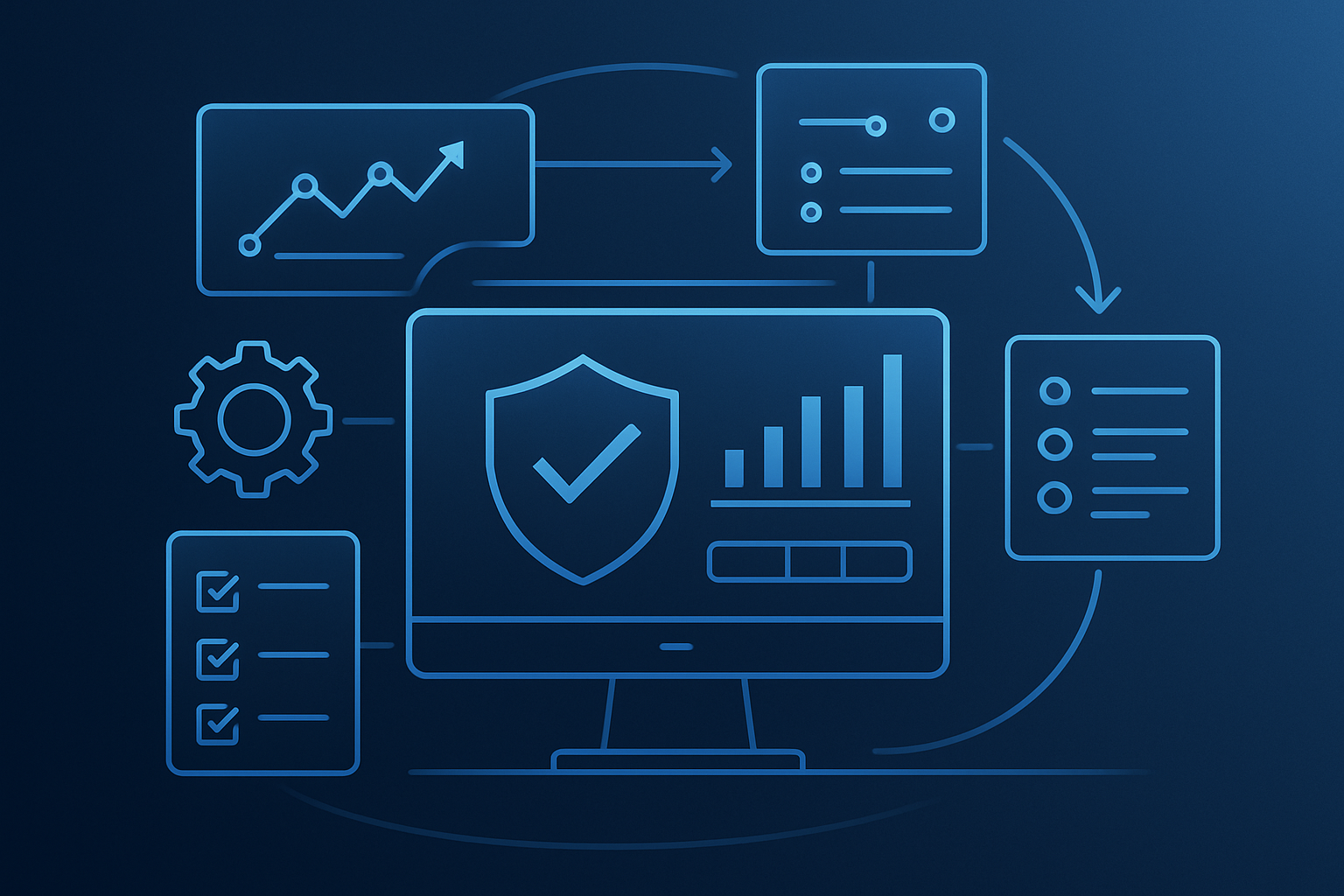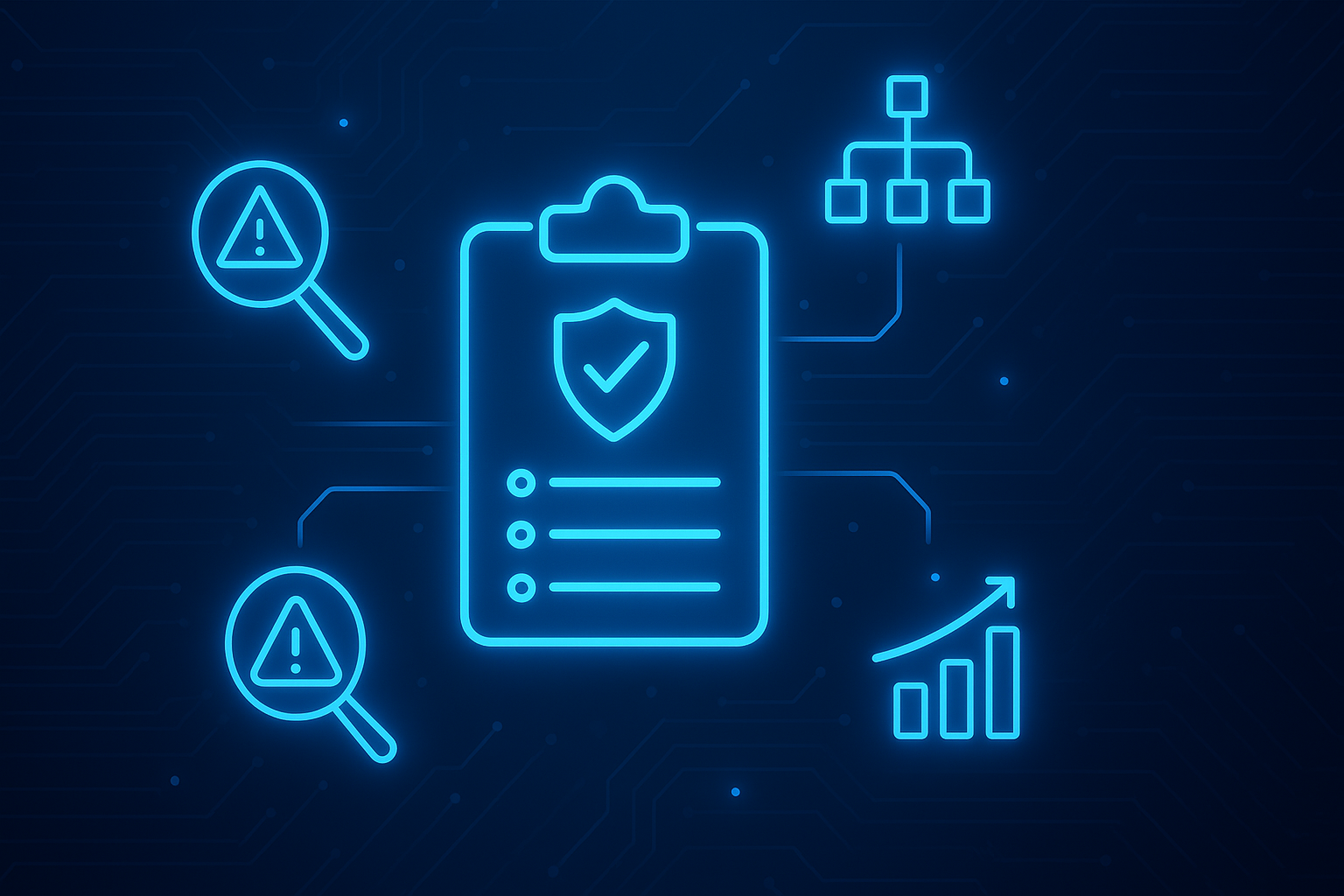Emerging technologies are shaping the future of every industry. Whether that’s through AI and robotics transforming the way humans interact with the world or ever-evolving “things” that are being embedded with sensors and software (hello, Alexa and Google Home) that strive to make every aspect of your life “smart.” Technology moves so fast that product leaders need to have their fingers on the pulse of various emerging technologies and their potential impact. These technologies support market expansion, allow better differentiation of products and services, and enable providers to be more competitive and efficient.
One of the ways CyberSaint uses emerging technologies is through Natural Language Processing (NLP). NLP’s ultimate objective is to “read,” decipher, and understand language valuable to the end-user. Currently, there are several ways NLP is used in day-to-day life. Many are familiar with chatbots or auto-complete emails or texts. But there’s a gap in cybersecurity and integrated risk management where NLP could inform risk and regulatory compliance. Since interactions between humans and machines are based on language processing, NLP allows organizations to process increasingly large amounts of data, granting them the ability to be more efficient, risk-cognizant, and secure.
Human intelligence and machine intelligence are becoming increasingly intertwined. However, there’s still a lot of room for evolution in cybersecurity, specifically in how AI can influence governance risk management and compliance. According to Gartner’s client inquiry and Peer Insights’ review data, interest in NLP technologies increased by 518% in 2018 over 2017. Additionally, nearly two-thirds of adoption interest in NLP comes from business leaders rather than technical (IT) leaders, as the technology increasingly influences future company plans, business strategy, and development of NLP-related use cases.
Crosswalking into the future
According to Gartner, the pace of NLP patent filing has rapidly increased, with a compound annual growth rate of 34% in the last 10 years, indicative of an emerging technology going through rapid development and investment. It also aligns with rapidly increasing interest in NLP technology and its application across various use cases, such as speech processing, machine translation, text analytics, sentiment analysis, and virtual assistants.
CybserSaint takes a deep learning approach with NLP that allows crosswalking between frameworks without significant human intervention. This increases security maturity and makes the organization more risk cognizant. This becomes even more key when discussing cloud-based shifts post-COVID-19.
Teams that monitor risk must become aware of the changes that can happen minute to minute in an agile environment. Every environment needs to be supervised and evaluated. This constant, manual assessment isn’t practical for companies to manage with employees alone. Humans are fallible, and it’s harder to discover gaps in security without a continuous auditing process that leverages automation to achieve its goals.
In a world where automation is taking over fast food, driving, package delivery, and practically every other industry, why isn’t it more prevalent in cybersecurity? For a sector inundated with cutting-edge technology in almost every other aspect, somehow, risk and compliance management have fallen to the wayside. Employees and chief information security officers (CISOs) still spend hours poring in spreadsheets and doing manual control monitoring. In 2021, with digital transformation everywhere in the world, it was frankly unacceptable.
According to Gartner, By 2021, fewer than 15% of organizations will implement holistic monitoring, putting $255 billion of investments in cloud-based solutions at risk.
Cyber professionals are under more pressure than ever to support new digital transformation technologies, all while maintaining the previous systems. With new responsibilities constantly being foisted upon them, it becomes even more impractical to expect cybersecurity leaders to monitor internal controls and risk management manually.
We need to start looking at solutions that allow automation to take at least some of the burden off of manually going through controls. By doing that, we allow cyber professionals to focus more on ways to innovate within the company and get to their “real” jobs of actively mitigating threats instead of just reacting to them.
Evolve or be left behind
A reactive approach in the ever-changing digital landscape of cybersecurity is no longer enough. Manually sifting through spreadsheets to determine compliance when the result may no longer be relevant when the assessment is through wastes thousands of hours of resources that could be spent elsewhere.
There is a simple solution: automation. Specifically, AI-assisted automation gives business leaders insight into real-time risk monitoring and assessments. This approach mitigates control gaps and reduces the overall cost of audits.
Teams that monitor risk must become aware of the changes that can happen minute to minute in an agile environment. Whether that environment is product releases, financial information, or sensitive client information, everything needs to be supervised and evaluated. This constant assessment isn’t practical for companies to manage with manpower alone. Humans are fallible, and it becomes much easier to have gaps in security without a continuous auditing process that leverages automation to achieve its goals.
It doesn’t help that this data is often modular or siloed, existing in several different places that don’t communicate with one another. This makes it difficult when a breach does happen because it doesn’t allow CISOs or higher-level executives to make decisions based on aggregated data and insights. When data breaches happen in seconds, manual monitoring can make or break a situation when it takes hours to make a decision. It also highlights a critical weakness in business processes and internal auditing procedures.
It will always be a consistent struggle to maintain control monitoring with legacy approaches and legacy IT GRC systems.
Not just a buzzword
AI is a buzzword thrown around a lot, especially in cyberspaces. When we discuss AI here, we’re not talking about a system that sends emails when controls are out of date or texts when compliance hasn’t been met. Instead, we’re talking about real-time monitoring that continuously updates.
At an operational level, automated control monitoring addresses risk in a way that allows executives to allocate resources in a way that will yield the greatest return on security investment. Siloed data only cripples control monitoring strategy and doesn’t allow for the transparency necessary to address security from a risk-first approach.
Conclusion
The impact COVID-19 has had on the world has shown more than ever that automation is not only upcoming but a necessity. Convert automation into successful business objectives.
Automation reduces costs, saving members of the Fortune 500 million’s annually with options to reduce business losses in the event of a breach. The use case for AI is clear for modern enterprises. Embracing the need for AI operationalization will shift the focus to continuous automated monitoring. Business leaders must focus on technologies like CyberStrong that bridge the gap between siloed systems and augment existing systems, especially in companies suffering from downsized security teams during the pandemic.
To learn more about NLP and automated risk assessments, check out our webinar here. To see how CyberStrong can save you millions of dollars annually, contact us.





.png)
.png)
.png)
%201.png)
.png)




